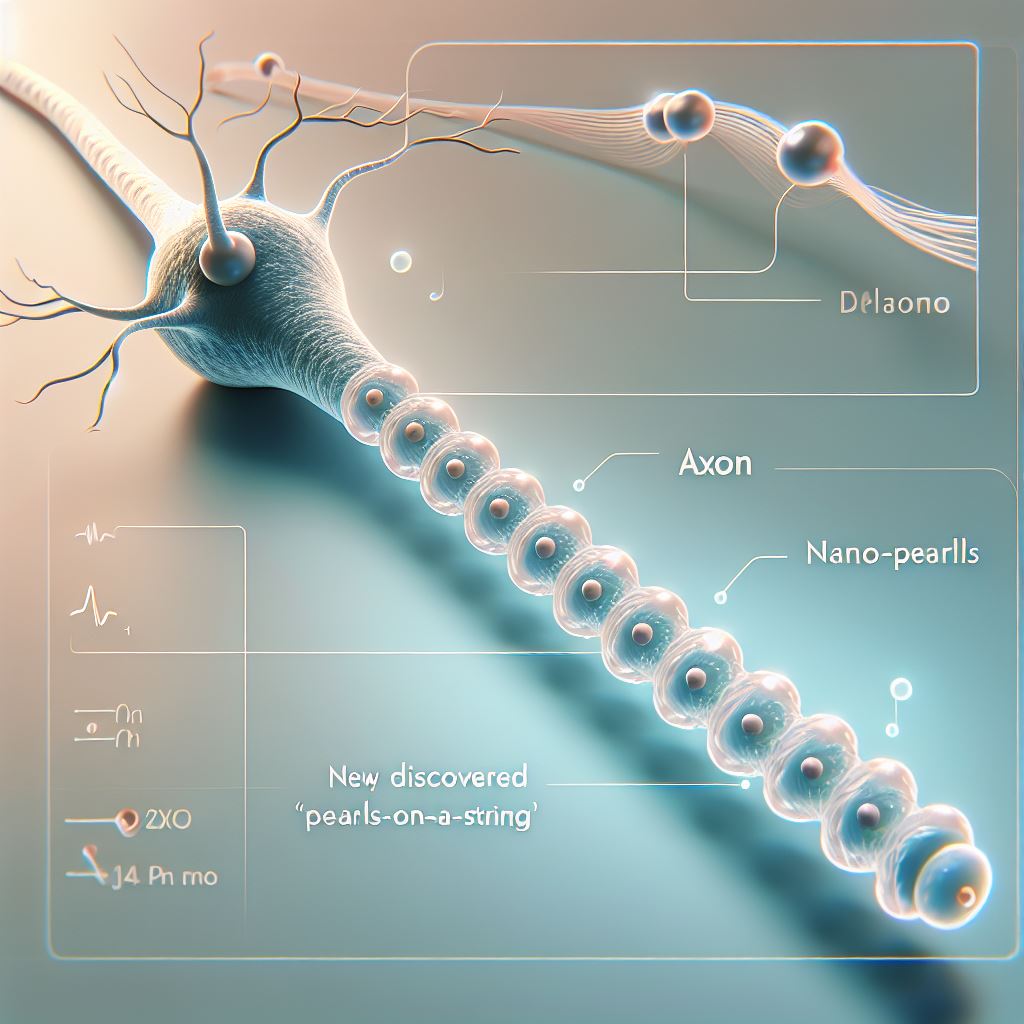By [Syed Amjad] | June 2025
For over a century, biology textbooks have depicted axons—the long, cable-like extensions of neurons—as smooth, cylindrical tubes. These structures were thought to transmit electrical signals at a constant speed, forming the backbone of neural communication. But a new study led by Dr. Shigeki Watanabe of Johns Hopkins University has upended this long-held belief, revealing that axons are not smooth tubes at all—but rather resemble a “string of pearls.”
🔬 The Discovery
Using advanced cryo-electron microscopy, Watanabe and his team observed axons in mouse neurons and discovered that they contain intermittent bulges along their length. These bead-like structures, termed “non-synaptic varicosities” or “nano-pearls,” are not anomalies but a fundamental feature of axonal architecture
1.
These nano-pearls are dynamic. Their size and shape can change in response to local cellular conditions, such as cholesterol levels in the membrane. This flexibility means that the speed of electrical signals traveling down the axon is not constant, as previously believed, but can be modulated by the axon’s physical structure

2.
⚡ Why It Matters
This discovery has profound implications for neuroscience:
- Signal Modulation: The varying diameter of axons affects how fast signals travel, suggesting a new layer of complexity in how the brain processes information.
- Neurodegenerative Diseases: Conditions like Alzheimer’s and Parkinson’s are associated with changes in membrane composition. The study found that reducing cholesterol levels in axons shrinks the pearls and slows signal transmission, potentially linking structural changes to disease progression 2.
- Textbook Rewrite: The classic image of axons as uniform tubes may soon be replaced with a more accurate, dynamic model.
🧪 A New Frontier
Dr. Watanabe likens the axon to a highway that narrows and widens unpredictably: “If you have a four-lane highway that suddenly narrows to one lane and then opens again, traffic slows down. That’s how signals move through these axons,” he explains
2.
The team is now exploring whether similar structures exist in human neurons, and how this discovery might influence treatments for neurological disorders.
Here is the visual diagram illustrating the newly discovered “pearls-on-a-string” axon structure:

🔍 Labels:
- Cell Body: The neuron’s main body where signals originate.
- Axon: The long projection that carries signals away from the cell body.
- Nano-Pearls: Intermittent bulges along the axon that modulate signal speed.
- Synapse: The endpoint where the signal is transmitted to another neuron.



